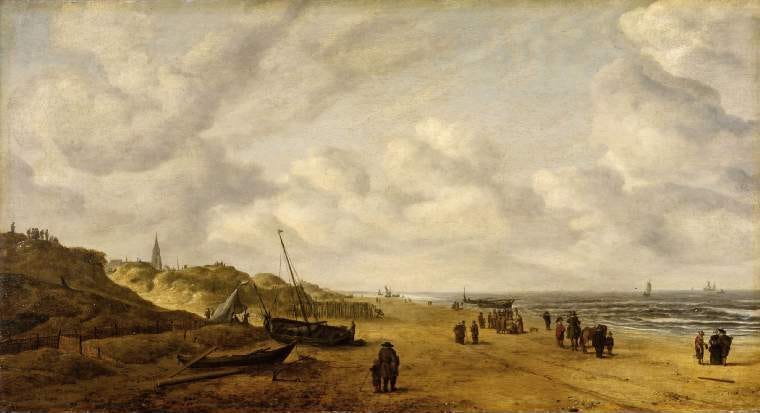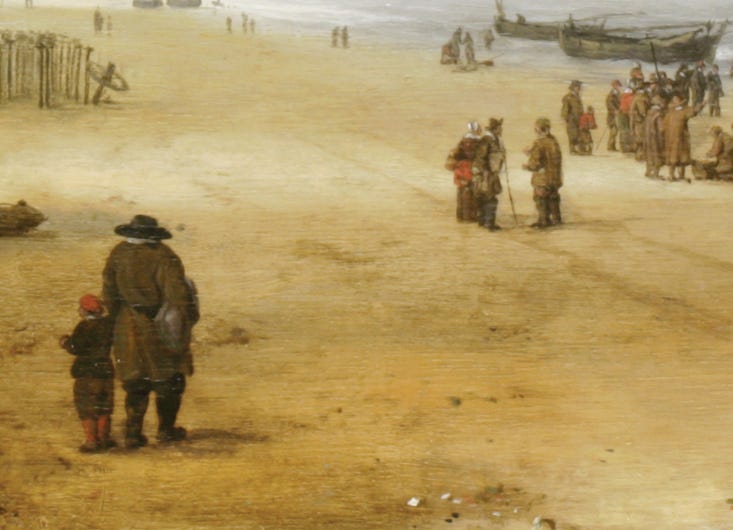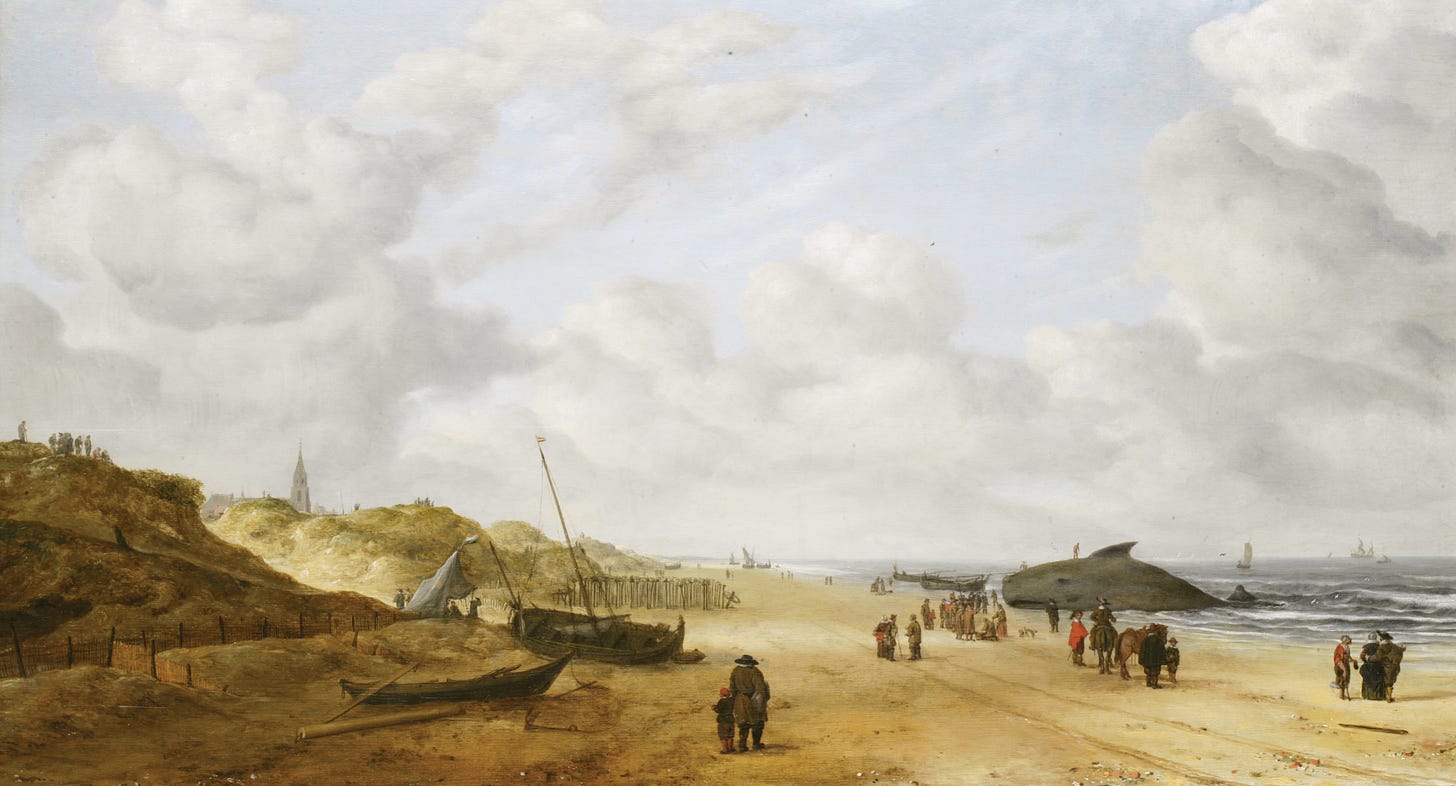For more than one hundred years, this relatively unremarkably painting by Hendrick van Anthonissen was held in the collection of the Fitzwilliam Museum in Cambridge, England. . . where, frankly, no-one ever paid much attention to it.
A simple beach scene, slightly yellowing due to the effects of aging varnish - it was the work of an artist who had lived during one of the peak periods of Dutch art . . . yet, with all due respect to Hendrick, we can see that he was never destined to reach those sparkling height of Vermeer, Rembrandt or any of his more iconic contemporaries.
So, in that sense, his work may well have been destined to forever be a footnote in the Fitzwilliam collection, had it not been for a highly unusual discovery in more recent times.
And looking back now with the benefit of hindsight, certain scholars do like to claim that they always knew something more was going on with this painting. (Though whether we choose to believe them or not is another matter!!)
After all, on first glance at the scene above, it does seem curious that these groups of people are all drifting towards the waters edge, or staring at the horizon for no apparent reason.
But of course, this was always fairly easily explained away by suggesting the narrative was just a typical “Sunday stroll” - or that the different families were all watching the boats we can see in the distance.
So the truth is, if we had spoken to any Cambridge Academic or Art historian at any time over the last hundred years, they would undoubtedly have told us there was really not much more to see here.
And it was only in 2014 - when the painted happened to be taken in for restoration - that everything changed so spectacularly.
The restorers1 were keen to remove the old varnish on the work, in the hope of this bring our more of the original colours again.
But soon into this process of cleaning, they noticed something very odd.
There was a whole section of the painting right there at the waters edge where the brushwork was significantly different to the rest of the picture. . .
(Apologies for the grainy picture here to show this . . . I am sourcing this image from the Cambridge archives, where the quality of photo for the work pre-restoration is not great!)
Of course, the first assumption was that perhaps the painting had been damaged at some point - hence, this must have been the handiwork of a previous restoration.
But with another scan and a little more cleaning, it became more apparent that something was actually hidden underneath this added layer.
And so, after much debate, the restorers were given permission to remove the layer entirely . . . revealing a whole new star of the show here that absolutely no-one could have predicted.
A gigantic whale - washed up on the shore!
This was the secret that Hendrick’s painting had been hiding for all these years. And in bringing this to light again, the mystery was finally solved as to why all these crowds in the painting had flocked to Scheveningen Sands on this day.
No, this wasn’t just another Sunday stroll . . . it was in fact a once in a lifetime opportunity to see this real life Leviathan.
Now, sadly - we still don’t know exactly when or why the painting ended up being altered in this way.
But personally, my guess is that it would have happened within the first hundred years of it’s history, as that explains why we have no other record of it’s original form.
So, we might imagine the original buyer first purchasing the work because it memorialized an event that they themselves remembered (perhaps they were even on the beach this very day!)
But then, later on in life - or maybe when the painting was eventually passed down to their offspring - the sight of the dead whale obviously felt a bit too unsightly.
Hence, rather than simply sell or throw away this family heirloom . . . it makes sense why the inheritors would have decided to have it modified instead.
_
Although, if that really is the case, then I have no doubt the original buyer - and, indeed, the Hendrick van Anthonissen himself - would both be extremely pleased to know that the painting has now been restored again to it’s original glory!
Alternatively, for one time donations please use the button below. And a special thank you to all of you who choose to support this newsletter in any of these ways listed.
Your support is immensely appreciated.
Footnotes:
Quick note on the restorers: These kinds of projects are often a team effort. But in this case, it feels only right to give particular credit to Shan Kuang, who was a student at the time but played a vital role in this rediscovery.










Not just another Sunday stroll, indeed. I wonder how many other paintings, including better-known ones, have had changes made to them This can't possibky the only case of a paint-over.
Stranded whales were a common theme on Dutch prints of the late 16th and 17th century. The whale was an omen: bad luck - just like a comet. A good reason to have it painted over.